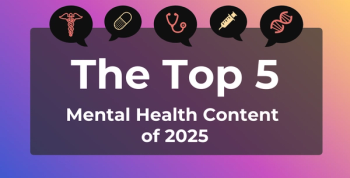
Multisector Approach Best for Reducing Homeless Individuals in the Streets: Katherine Koh, MD, MSc
Approaching homelessness through prevention and local government policies is the next step in addressing increased incidence of homelessness, said Katherine Koh, MD, MSc.
Local and state governments can help to address homelessness in the US as just part of a multisector approach to homelessness, which must include a strategy for homelessness prevention, explained Katherine Koh, MD, MSc, a practicing psychiatrist at the Boston Health Care for the Homeless Program and Massachusetts General Hospital.
This transcript was lightly edited for clarity; captions are auto-generated.
Transcript
What should the next steps be to address this executive order in health care?
I think it's important to note that implementation of mental health laws are typically determined by states. State and local leaders must therefore focus on implementing effective cross-system solutions that include local, state, and private resources. This includes first addressing the root cause of homelessness, which is a lack of available and affordable housing in the United States, and focus on ways to increase development and supply of this affordable housing for people in need, for people who are already homeless. This includes state and local leaders focusing on building up and funding robust community-based services, including ACT teams—assertive community treatment—which does proactive outreach to homeless individuals or people in unstable housing, street medicine, street psychiatry teams, and interventions such as critical time intervention, which strives to provide services to people who are at high risk for becoming homeless or who have been homeless before and are vulnerable to becoming homeless again.
Finally, I think it's important to note that the bedrock of homelessness policy must be homelessness prevention, because even if we were to house everybody who's homeless today, we still wouldn't solve the problem of homelessness, because there'd still be a whole pipeline of people coming down the line who are going to become homeless. Any homelessness policy plan needs to include a focus on prevention, and this can be done through providing financial assistance to people at risk for losing housing and, importantly, early risk detection: finding ways to identify people who are likely to become homeless before they become homeless and connecting those individuals to services and intervention programs to prevent them from falling into homelessness.
I truly believe if we take this comprehensive, multisector approach, we can humanely and sustainably give homeless individuals the housing and care that they desire and deserve.
Newsletter
Stay ahead of policy, cost, and value—subscribe to AJMC for expert insights at the intersection of clinical care and health economics.







































